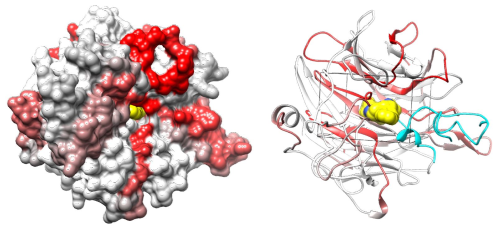Researchers at City of Hope, one of the biggest cancer research and treatment centers in the US, have identified a novel biological process that is critical to the pathogenic potential of cancer cells. The research was published in the journal Nature Structural & Molecular Biology.

Image Credit: City of Hope
Led by Chun-Wei (David) Chen, PhD, an Associate Professor of Systems Biology at the City of Hope, a team identified integrin αV and β5, two cell-surface proteins that work together to promote the proliferation of cancer cells. Subsequently, the scientists discovered that the β-propeller domain of integrin αV regulates the communication between the two proteins.
Chen's group developed a potent digital application of CRISPR gene-tiling technology to find possible cancer drugs that specifically target the β-propeller domain by combining computer simulations and lab trials.
The researchers used the chemical compound Cpd_AV2 on human cancer cells in the lab after determining it to be a strong contender. The proliferation of cancer cell lines was effectively stopped by the quick separation of integrin αV and β5, which resulted in the loss of communication between the two proteins and cellular death.
Through clinical study, the researchers discovered upregulation of integrin αV in several cancer types, underscoring integrin αV's pivotal involvement in the advancement of cancer. A poor prognosis was also linked to high levels of integrin αV in 3,700 patients who had malignancies of the brain, liver, lung, pancreas, breast, or pancreatic.
Significance
The results conducted by City of Hope offer a promising new avenue for cancer treatment and future drug discovery research by increasing prospects for developing targeted medicines that break the link between integrin αV and β5.
Our study showcases an innovative application of CRISPR gene-tiling technology, revealing previously undiscovered sites on proteins with the capacity to cause cancer, and this breakthrough opens new avenues for the advancement of next-generation oncologic therapies, marking a significant milestone in City of Hope’s battle against cancer.”
Chun-Wei Chen, Division Director, Department of Epigenetic and Transcriptional Engineering, Beckman Research Institute, City of Hope
Background
Up to 1,100 distinct proteins are thought to reside on the semi-permeable surface of cancer cells, known as the plasma membrane. The biological activities of many of these proteins may have an impact on the course of the disease and the effectiveness of treatment.
Because the area has a large number of surface receptors and signaling proteins that can be modified to help deliver cancer medicines, it provides a useful pool of targets for medical intervention.
The integrin family, which includes integrin αV and β5, is a collection of cell-surface receptors that is essential for controlling cellular interactions, especially those that occur across cell membranes.
Source:
Journal reference:
Mattson, N. M., et.al., (2024). A novel class of inhibitors that disrupts the stability of integrin heterodimers identified by CRISPR-tiling-instructed genetic screens. Nature Structural & Molecular Biology. doi.org/10.1038/s41594-024-01211-y